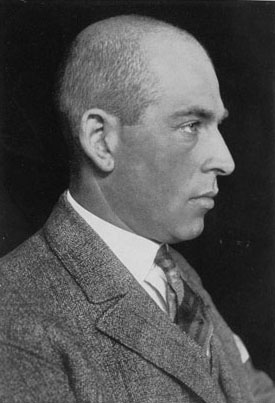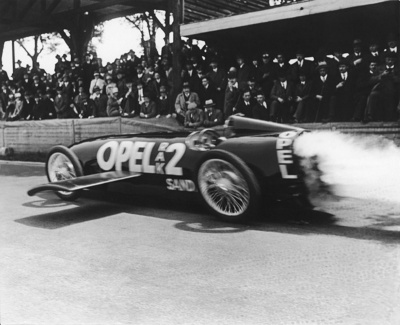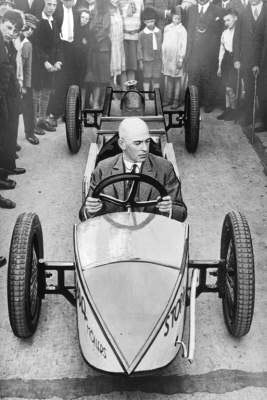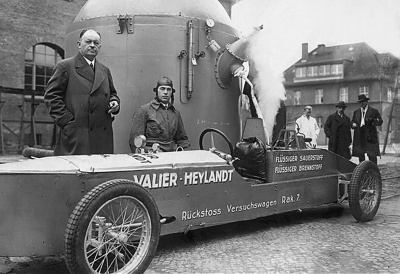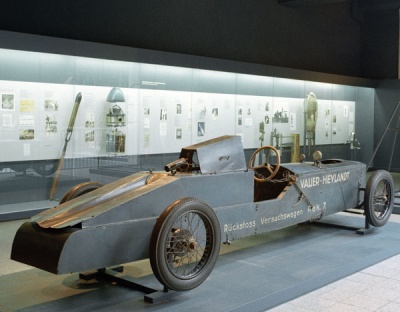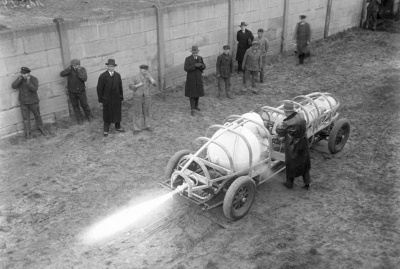Max Valier
From The Space Library
Fritz von Opel drives Max Valier's solid rocket propelled RAK-2 car at the Avus race track (c. May 1928)
Max Valier gazes at the camera as his sponsor Fritz von Opel receives the acclaim for Valier's rocket car. (May 1928)
Max Valier with his solid rocket propelled railway carriage RAK-1 (ca. 1928)
Max Valier and his RAK-1 solid-rocket propelled ice sled. (c. Jan 1929)
Max Valier RAK-2 solid-rocket ice sled at Lake Starnberg (9 Feb 1929)
Max Valier in his solid-rocket propelled RAK-3 aircraft (c. 1929)
Max Valier in his RAK-4 gas propelled car, sponsored by Stoppa. (ca. Nov 1929)
Max Valier drives his RAK-6 compressed gas propelled car at Avus speedway, Germany (Dec 22 1929)
Valier fires the engine on the RAK-7 rocket car, April 1930, representing the first time a liquid fuelled rocket had propelled a manned vehicle.
Paul Heylandt and Max Valier, April 1930, with Rak 7 LOX/Alcohol rocket car. Walter Riedel in white lab coat in the background
Some historical reports claim that the RAK-7 was powered by LOX and gasoline or benzene. This was not the case. It was after demonstrating the car using alcohol as the fuel that Valier chose to seek out a sponsor in the gasoline industry. He approached the Shell company who expressed some interest in providing him with much-needed sponsorship money but he would have to use Shell's products to fuel the car. It was during his early tests to run LOX and gasoline on a test stand that Valier was killed. Unknown to anyone at the time the effect of LOX on gasoline was to cause it to congeal into a gel-like paste. It was discovered that a slurry of gasoline gel congealed in the combustion chamber and when it broke loose the engine exploded. Valier was struck in an artery by shrapnel. He died moments later. His assistants Arthur Rudolph and Walter Riedel were spared, protected by a waist-high half wall.
Max Valier's RAK-7 liquid fuelled rocket car in the Deutsches Museum.
Heylandt/Riedel/Pietsch rocket car test firing engine 160kg thrust (c. April 1931).
The image above is taken at Heylandt factory in Berlin-Britz after Valier's death. Work continued with Riedel, Heylandt, Alfons Pietsch and Arthur Rudolph. The car was designed by Riedel with a new injection system devised by Rudolph. Cylindrical fuel tank at front, large spherical oxygen tank in rear. The car was driven at the Heylandt works by Pietsch before being demonstrated at the Tempelhof airfield in May 1931.
